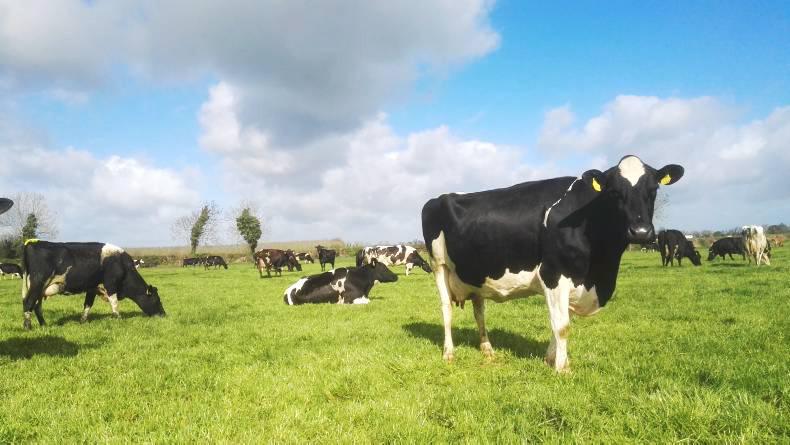Leasing cows, suffering with mental illness, and building a farming system that is sustainable into the future were key topics for discussion at the Teagasc National Dairy conference in Mullingar last week.
The panel session with dairy farmers Eamon Fagan, Westmeath, Brian Reidy Sligo, and Brian Gilsenan, Cavan, went down very well with the audience. Each farmer had a real good story to tell, with each at a very different stage in their career.
Brian Gilsenan has just completed a two-year dairy farm management course which saw him gain work experience with some top-class dairy farmers around Ireland and abroad. Brian explained one of the real benefits of this course is that it brought him into contact with some great farmers that he can lift the phone to make contact with at any stage. That is a huge benefit to him as he starts his career in dairy farming and assesses various opportunities that pop up all the time.
One of the decisions he already made was to own stock. He invested money in rearing and growing milking stock, even though he had no room to milk them at his home farm with his father Hugh near Virginia, Co Cavan.
Brian bought 50 heifer calves over two years ago, reared them, put them in calf and in February of this year he leased them out to another farmer when they calved down.
He said: “You need to be able to trust the farmer where the cows are being milked. I knew the farmer very well where they are going so I’m comfortable the cows will be looked after and come back in good condition. I get 10% of the agreed retail value per year and I get back the heifers in-calf or similar stock in-calf at the end of the lease. My herd EBI was increasing at €8 per year so if I don’t get heifers back for three years I need to get a bunch of heifers back with an EBI that’s €24 (3 x €8/year) better than what stock I delivered to the farm.”
The medium-term plan is that Brian would take up a position or a job in a farm where he could bring his 50 cows with him. That would give him an equity stake in the business where he was working rather than just a salary. The 50 or 100 cows would be part of a larger herd milking maybe 400 cows and he would get the profit from this proportion of the herd, cover some of the costs and perhaps have some guaranteed salary income also.
Work-life balance
Brian Reidy and Eamon Fagan spoke a lot in the panel session about developing a farm system or model where a good work-life balance was possible. Both farmers felt the grass-based spring-calving system with good-quality cows offered a lifestyle if done correctly that could deliver a sustainable living. Brian moved away from producing winter milk as he and his young family developed their land base and invested in the farm.
Brian explained how he suffered from mental illness as depression grabbed a hold of him.
He said: “It is easy to see sickness when you have a broken leg or a broken arm but a broken head is a lot more difficult to recognise. Farmers need to look after themselves and recognise if a discussion group member is not coming to meetings or is not in contact with other group members.
“Essentially the sickness is a chemical imbalance in the brain, but, it can be overcome and it can be fixed, but the first step is to recognise you have a sickness and talk about it with someone. There is great help available.”
Top herd
Eamon Fagan had a dairy herd in the top 5% of herds over ten years ago and now he is milking three-way crossbreds (Holstein x Norwegian Red x Jersey) – that still is a very high-ranking herd.
One farmer in the audience asked Eamon if the EBI figure for some other breed sires was low would he still use alternative breeds. Eamon suggested you need to use the best sires available because in all breeds there are good and bad sires.
He said: “I’ve been using the best sires I can get for all breeds. Yes, the EBI figures for some of the other breeds is not great but I see the benefit of the hybrid vigour and that is not in the sire EBI figure. For me the overall package is more sustainable and suits my system.
“As herd size grows, walking and lameness becomes more and more of an issue and you need a cow that can last the pace yet deliver high milk solids.”






 This is a subscriber-only article
This is a subscriber-only article





SHARING OPTIONS: